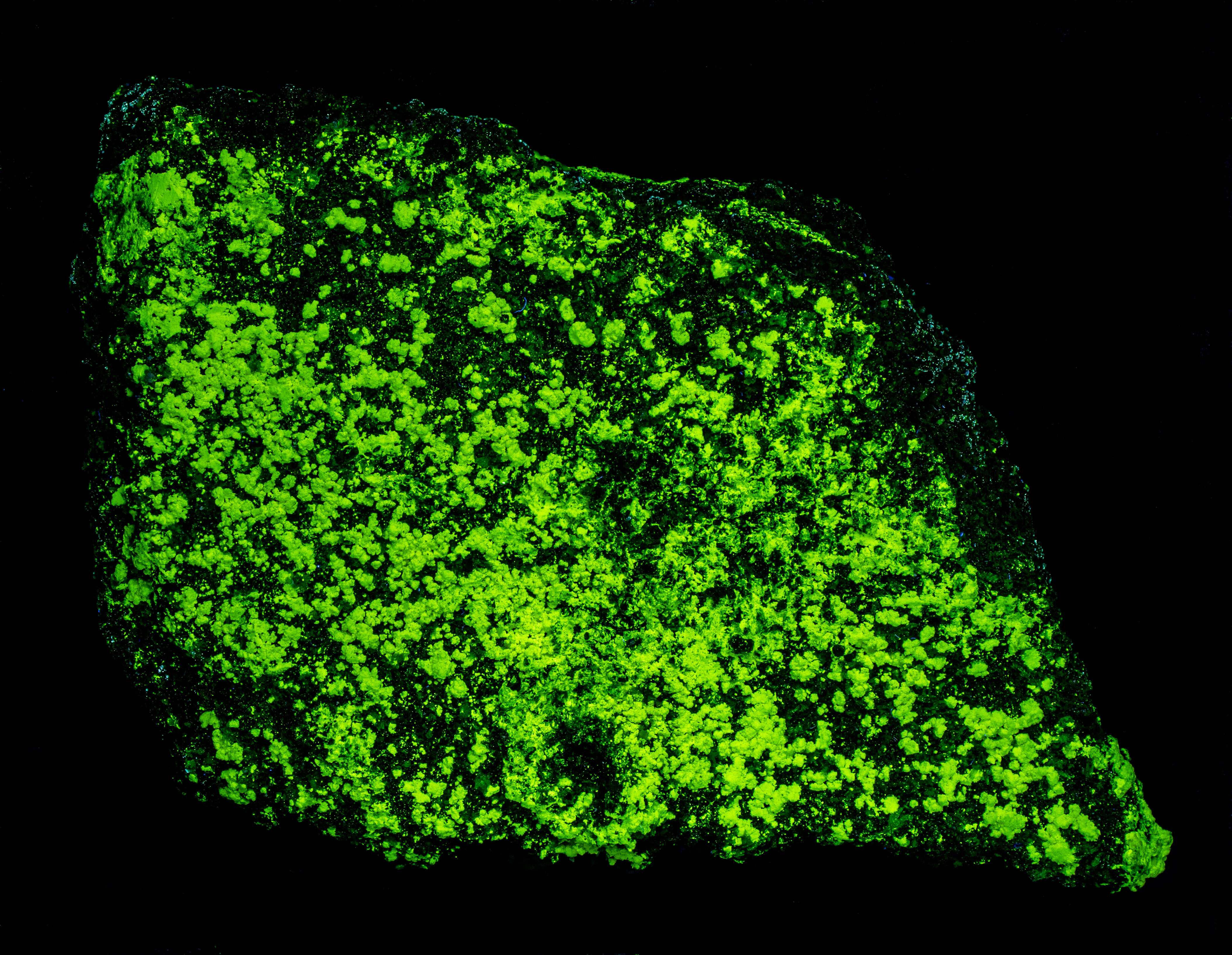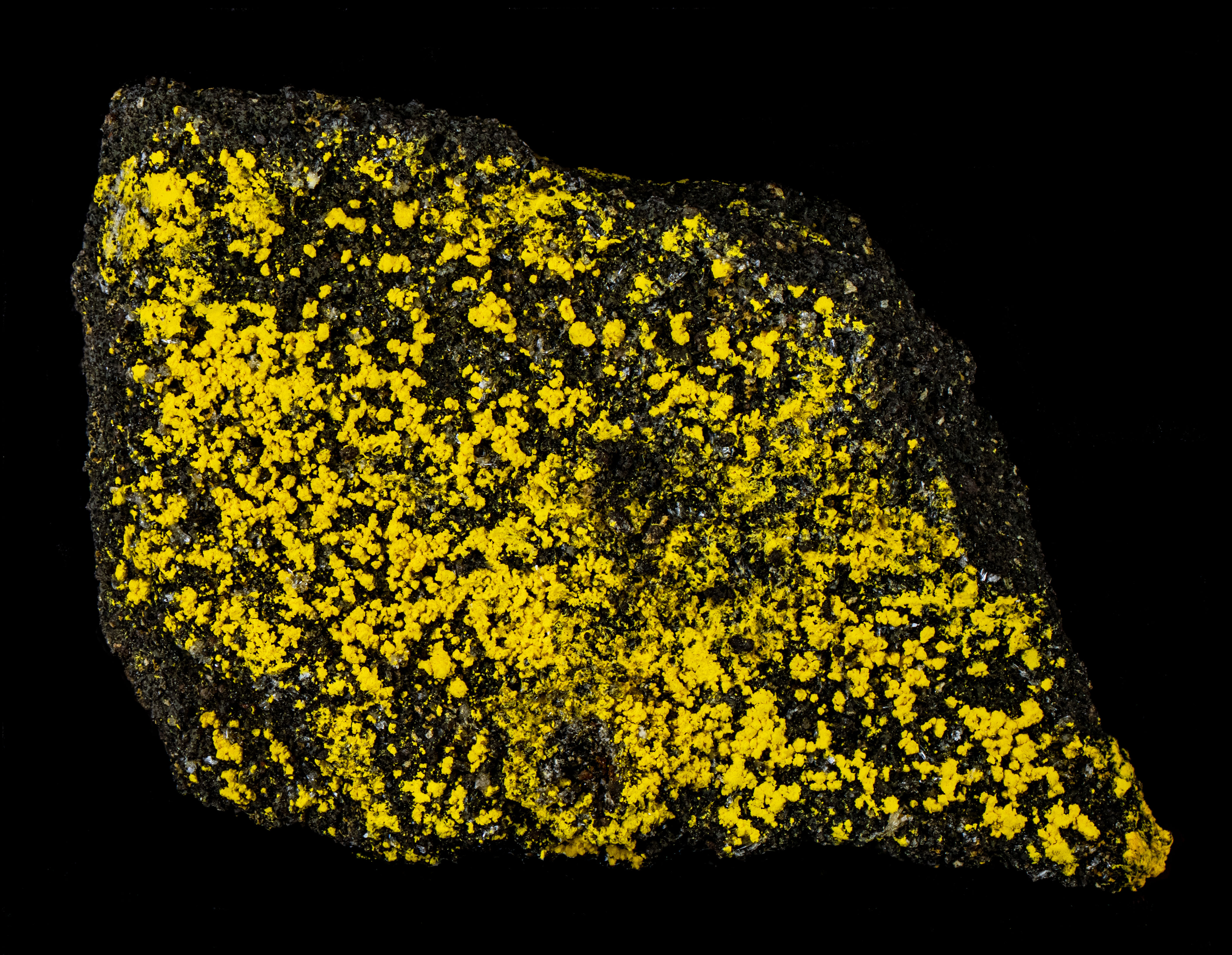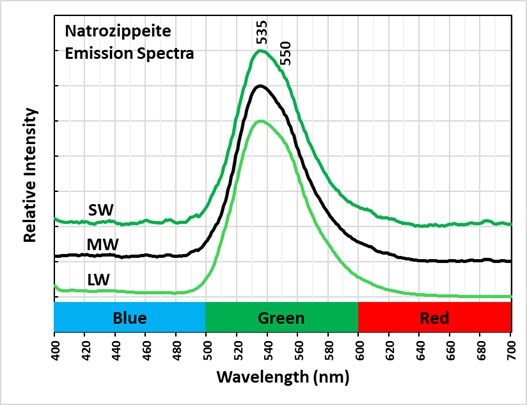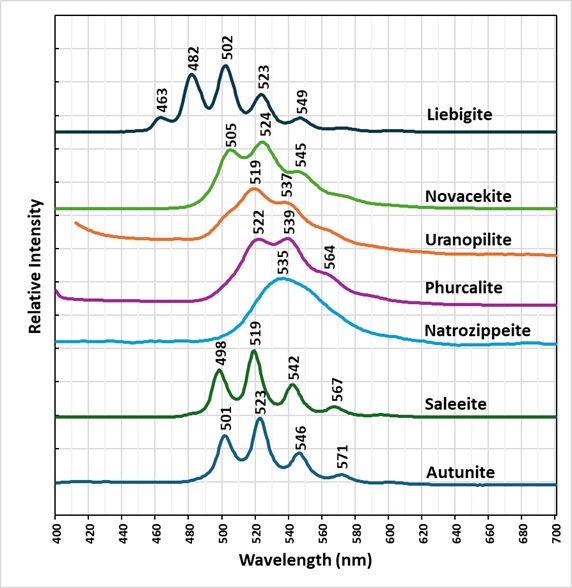Natrozippeite from New Mexico
Contributed by: Michael Crawford
Date: Aug 2nd, 2025
Locality: Section 35 Mine (Elizabeth shaft), Ambrosia Lake subdistrict, McKinley County, New Mexico, USA (See on Mindat)
Size: 3 x 5 cm
Description:
Natrozippeite (Na5(UO2)8(SO4)4O5(OH)3 · 12H2O) on black coffinite impregnated sandstone from the Kerr-McGee Section 35 Mine, Ambrosia Lake District, McKinley County, New Mexico. This natrozippeite fluoresces green under all wavelengths of UV light.
The emission spectrum is unique for uranium minerals that are fluorescent. The spectra for all wavelengths have the same shape. The spectra have a single broad peak, whereas most uranium minerals have two or more sharp peaks. The top of the peak is asymmetric and it may be the sum of two peaks, one at 535 nm and another around 550 nm. The coordination of the linear uranyl ion with the other chemical components in natrozippeite must inhibit vibration of the uranyl ion when exposed to UV light.
The radioactivity of this specimen is around 2550 CPM. It is higher because the uranyl ion is part of the mineral structure and not a trace amount replacing some element in a mineral.
Summary of luminescence responses:
Natrozippeite (Mindat) (RRUFF)
- Fluorescence under Longwave (365nm LED) UV light: Green
- Fluorescence under Midwave (305nm LED) UV light: Green
- Fluorescence under Shortwave (255nm LED) UV light: Green




